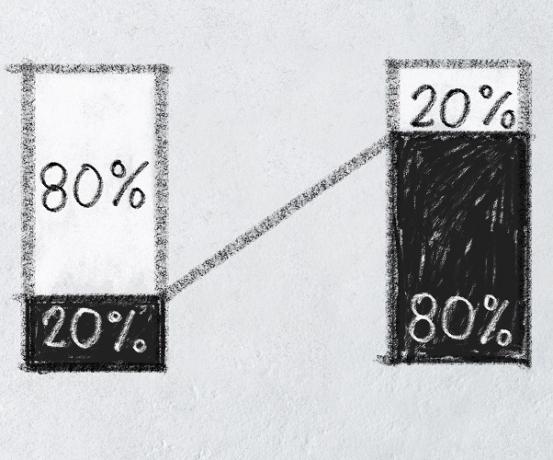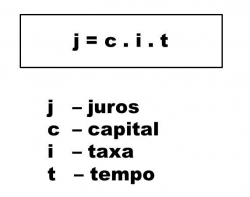Pareto's Law (or Pareto Principle) states that 80% of results are derived from 20% of causes. The principle arose from an economic observation, but it can be applied to the most diverse areas or subjects.
In short, Pareto's Law explains that the least part of the resources is responsible for the most part of the results.
The beginning of the Principle happened through the observation made by the economist Vilfredo Pareto, who noticed that the 80/20 ratio was found in countless situations. At the time, Pareto visualized that approximately 20% of Italian families held about 80% of the country's wealth.
After obtaining this data, he began to study the proportion and could conclude that the measure was found in different situations.
Pareto Principle or 80/20 Rule
The application of Pareto's Law is known as 80/20 rule, has as one of the main benefits the improvement of the results obtained. The more the law is applied, the more positive results can be expected, with less effort/time investment.
In practice, the 80/20 principle offers the idea that 80% of the results obtained are the result of 20% of the efforts undertaken. Based on this perception, it is possible to evaluate how to optimize the application of time, reducing the effort and improving the results achieved.
Pareto's Law does not aim to increase the workload executed. It is focused on reallocating efforts and tasks to achieve better results, while reducing applied efforts.
Pareto's Law and Productivity Improvement
Currently, one of the most used applications of the law is in the search for increased productivity, both business and personal.
Management experts and economists claim that using the Pareto Principle can provide better results for companies.
Example: a company, after evaluating its procedures, concludes that much of the work done by employees is bureaucratic, which reduces the time for the main objective of the enterprise (to make sales). In this case, it is possible to assess that most of the effort (such as 80%) results in few results (20%).
Based on this observation, the company can review methods and take practical measures to apply the Pareto Law, converting the least effort necessary into the maximum sales possible. The purpose of the assessment is to verify which procedures are essential and which can be changed or abandoned.
To ensure that the law is efficient, it is necessary to determine what is the main objective of the application of the principle, so that the measures applied are specific and are able to guarantee the improvement of results.

Pareto's Law, in addition to being applied in economics, can also be used to:
- increase a company's productivity;
- organize management systems;
- improve the organization of personal routine;
- expand the achievement of goals;
- organize personal and family finances.
Pareto Diagram
The Pareto Diagram is a tool used in the application of Pareto's Law. With the diagram it is easier to observe the actions and the results obtained. Its use makes it easy to see which points can be changed to ensure better results.
In companies, for example, it is a useful tool to determine the causes of losses, damages or customer complaints.
Learn more about Pareto Diagram.
Who created the Pareto Law?
The person responsible for noticing the repeated occurrence of the 80/20 pattern was Vilfredo Pareto (1848-1923), an Italian economist. As an economist, upon verifying the existence of this principle in the concentration of wealth in Italy, Pareto applied it to mathematics.
The consolidation of the concept created by him made the law well known and today it is comprehensive and used in many areas of knowledge.

